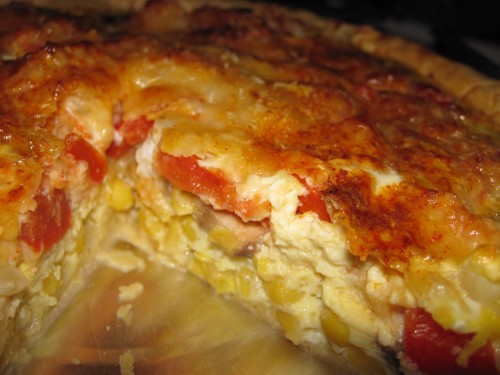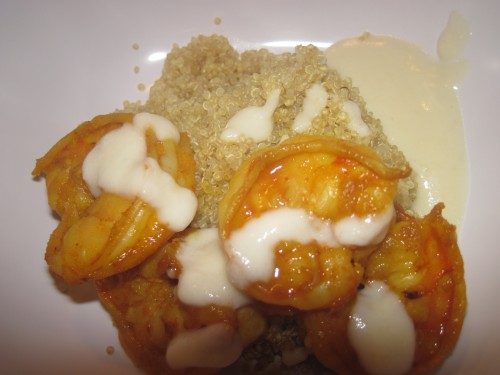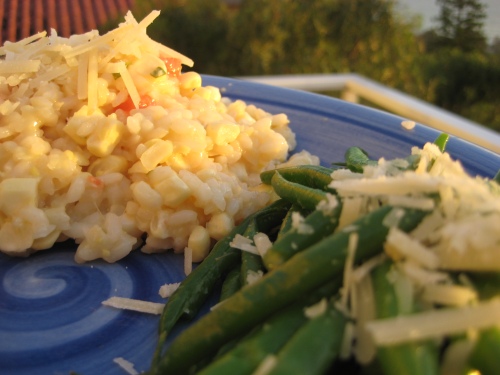So you expect to go back to school with leftovers from Thanksgiving. I was given pretty much a full vegetable garden. Tomatoes, bell peppers, avocados, lettuce, spinach, the list goes on and on. Since four of us share one tiny little fridge, I HAD to get rid of some of those veggies or else. I mean, I have a mini fridge because I always having more food than everyone else but this IS college, so it’s a little full of beer right now. What to do? Make a delicious quiche of course! They’re super easy, super cheap, and a great way to get rid of leftovers or your excess vegetables.
Vegetable Quiche
- 1 Pie Crust-if you make them yourself PROPS! I haven’t yet mastered that art.
- 3-4 Eggs, organic! 🙂 You can make this a little less fatty by using just the whites, but don’t forget that the nutrients are in the yolk–>so I recommend at least leaving one whole egg.
- Whatever vegetables you have on hand, cut in small uniform pieces. I used Canned Corn, Bell Pepper, Tomato, Onion, and Mushroom. Super yummy.
- Cheese, organic–>again, you can use whatever type that you like but I really recommend doing as I did–>Shredded Mexican mixed with Parmigiano Reggiano.
- A couple shakes of Cayenne
- A couple shakes of Paprika
I know this is going to seem insanely easy but you seriously just put the egg in the bottom of the pie crust and fill it up with your veggies (cut uniformly) and top it all with your cheese. Bake at 400 for about 30 minutes.
Eco-benefits
- It’s a super easy way to get rid of leftover vegetables so they don’t go to waste (which is a huge environmental issue in America).
- Eggs can only be labeled organic if the food fed to the chickens is organic as well. This means that they are being fed produce that was not sprayed with pesticides. Since pesticides get washed into our waterways, this is a super great way to help avoid pesticide pollution and keep our limited water resources clean. The same goes for the organic cheese.
- If you use organic vegetables you’re furthering this chain of removing pesticides from our waterways.
- Use seasonal vegetables for a fuller flavor and so you can get them locally which helps cut out the travel fuel and reduces greenhouse gases.
- If you can make pie crusts and you know how to make them whole wheat that would be an amazing way to make this recipe even more sustainable! Whole wheat is not processed as much as bleached flour so it uses less energy.











